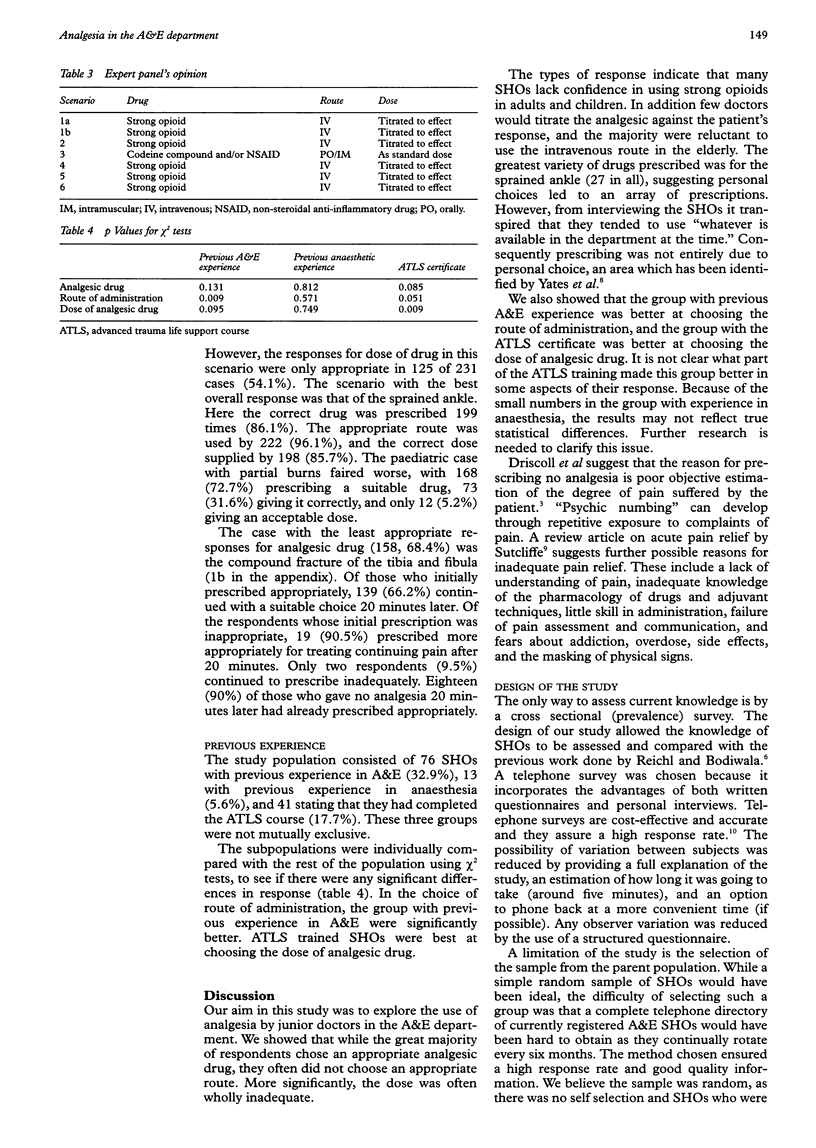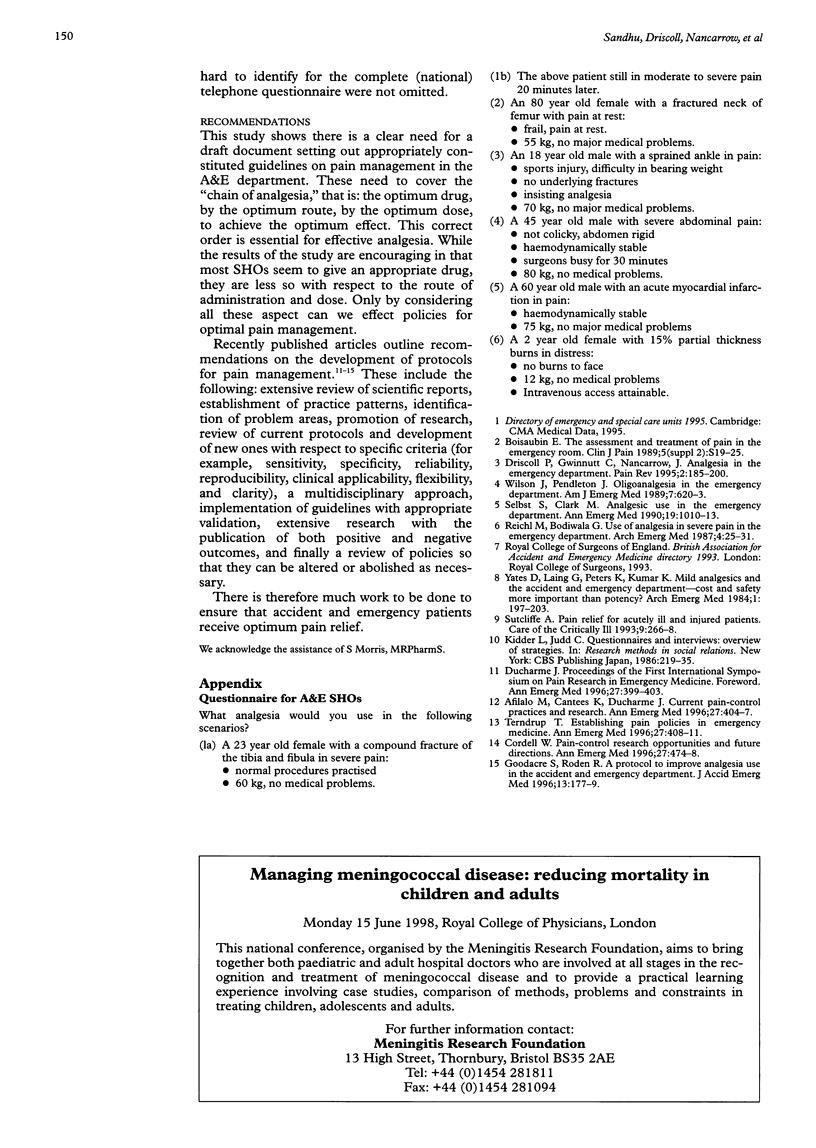Abstract
OBJECTIVE: To assess senior house officers' knowledge in prescribing emergency analgesia for acute presentations in the accident and emergency (A&E) department. DESIGN: Prospective telephone survey of a defined population of SHOs, using a standardised structured questionnaire, in the months of October and November, 1995; 231 SHOs from 215 A&E departments were interviewed. The questionnaire required responses to hypothetical scenarios. A six member expert panel from the local region was consulted for suggestions for appropriate responses. MAIN OUTCOME MEASURES: Comparisons between SHO responses and those of an expert panel. RESULTS: For choice of analgesic agent, 83% of SHO responses were appropriate, for route of administration 57%, and for the dose of drug 34%. The scenario with the best overall response was a sprained ankle. The paediatric case with partial burns faired worse. Responses to a myocardial infarction scenario were the most consistent. CONCLUSIONS: A&E SHOs lack knowledge and confidence when asked to prescribe emergency analgesia for acute conditions. Responses to certain scenarios were extremely varied, indicating a need for national analgesia guidelines and protocols. Recognised training in pain management should be more readily available.
Full text
PDF



Selected References
These references are in PubMed. This may not be the complete list of references from this article.
- Afilalo M., Cantees K., Ducharme J. Current pain-control practices and research. Ann Emerg Med. 1996 Apr;27(4):404–407. doi: 10.1016/s0196-0644(96)70215-9. [DOI] [PubMed] [Google Scholar]
- Cordell W. H. Pain-control research opportunities and future directions. Ann Emerg Med. 1996 Apr;27(4):474–478. doi: 10.1016/s0196-0644(96)70236-6. [DOI] [PubMed] [Google Scholar]
- Ducharme J. Proceedings from the first international symposium on pain research in emergency medicine: Foreword. Ann Emerg Med. 1996 Apr;27(4):399–403. doi: 10.1016/s0196-0644(96)70214-7. [DOI] [PubMed] [Google Scholar]
- Goodacre S. W., Roden R. K. A protocol to improve analgesia use in the accident and emergency department. J Accid Emerg Med. 1996 May;13(3):177–179. doi: 10.1136/emj.13.3.177. [DOI] [PMC free article] [PubMed] [Google Scholar]
- Reichl M., Bodiwala G. G. Use of analgesia in severe pain in the accident and emergency department. Arch Emerg Med. 1987 Mar;4(1):25–31. doi: 10.1136/emj.4.1.25. [DOI] [PMC free article] [PubMed] [Google Scholar]
- Selbst S. M., Clark M. Analgesic use in the emergency department. Ann Emerg Med. 1990 Sep;19(9):1010–1013. doi: 10.1016/s0196-0644(05)82565-x. [DOI] [PubMed] [Google Scholar]
- Terndrup T. E. Establishing pain policies in emergency medicine. Ann Emerg Med. 1996 Apr;27(4):408–411. doi: 10.1016/s0196-0644(96)70216-0. [DOI] [PubMed] [Google Scholar]
- Wilson J. E., Pendleton J. M. Oligoanalgesia in the emergency department. Am J Emerg Med. 1989 Nov;7(6):620–623. doi: 10.1016/0735-6757(89)90286-6. [DOI] [PubMed] [Google Scholar]
- Yates D. W., Laing G. S., Peters K., Kumar K. Mild analgesics and the accident and emergency department--cost and safety more important than potency? Arch Emerg Med. 1984 Dec;1(4):197–203. doi: 10.1136/emj.1.4.197. [DOI] [PMC free article] [PubMed] [Google Scholar]


